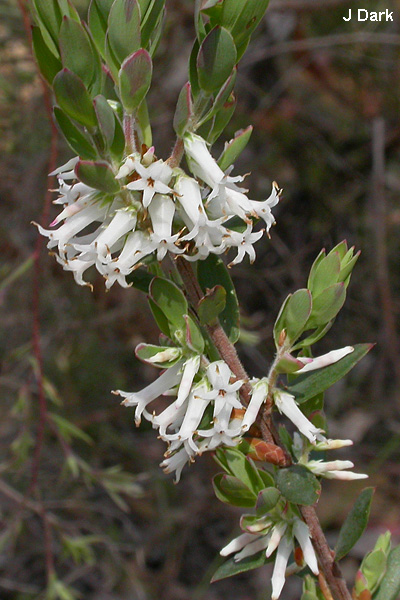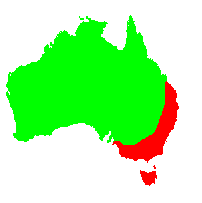General Description:
The plant family Ericaceae (heaths and heathers) is widespread in many parts of the globe, particularly Europe and South Africa. It contains a number of widely cultivated plants such as Erica, Rhododendron and Pieris.
Like most of Australia’s members of the Ericaceae, Brachyloma belongs to the subfamily Epacridoideae, which was formerly classified as a separate family, the Epacridaceae. Brachyloma is a small genus of about seven species distributed across most of southern Australia. They are small, wiry shrubs usually found in heaths, woodlands or forests.
Brachyloma daphnoides is a small, stiff shrub to about a metre or slightly more in height. The oval to elliptical-shaped leaves are about 5-15 mm long and taper to a point (not especially pungent). The white flowers are tubular and about 5-25 mm long, occurring in clusters in the leaf axils. The strongly scented flowers are generally seen in spring and early summer and are followed by small, fleshy fruits (drupes) about 4 mm in diameter and yellow-brown in colour.
This is a very attractive shrub and would make a useful addition to the garden. However, due to difficulties in propagation, it is rarely seen in cultivation. It is likely to require a well drained, protected position in semi shade and should be able to tolerate extended dry conditions once established. Like most members of the Australian heaths, B.daphnoides should be an excellent species for growing in a container.
Propagation from both seed and cuttings is very difficult. Seed germination is unreliable and may take many months to germinate, if at all. The best chance of striking cuttings would be by using firm, current season’s growth. Use of a hormone, root promoting chemical would probably be advisable.

Brachyloma daphnoides
Photo: Jill Dark
 Australian Native Plants Society (Australia)
Australian Native Plants Society (Australia)













